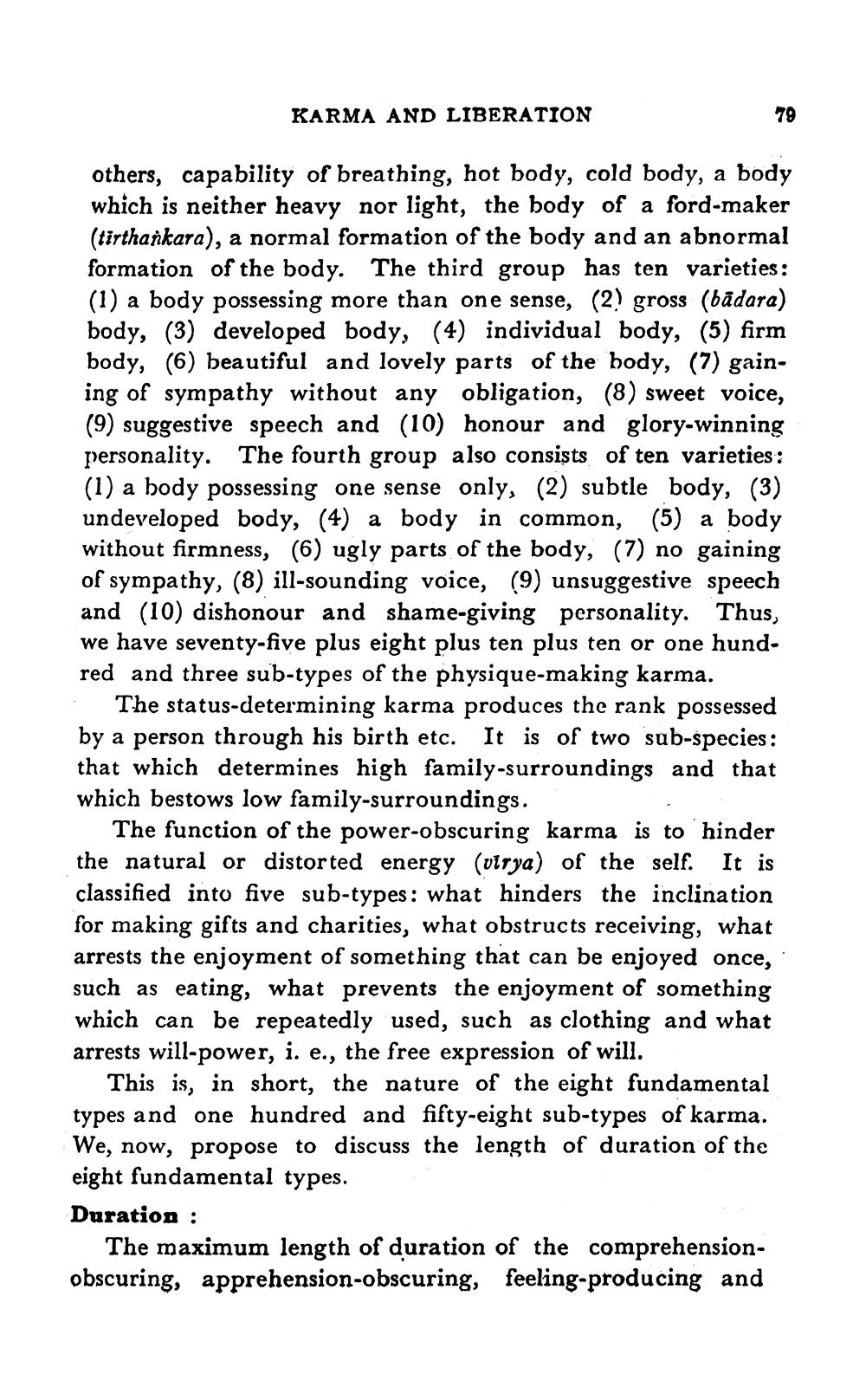________________
KARMA AND LIBERATION
others, capability of breathing, hot body, cold body, a body which is neither heavy nor light, the body of a ford-maker (tirthařkara), a normal formation of the body and an abnormal formation of the body. The third group has ten varieties: (1) a body possessing more than one sense, (2) gross (bādara) body, (3) developed body, (4) individual body, (5) firm body, (6) beautiful and lovely parts of the body, (7) gaining of sympathy without any obligation, (8) sweet voice, (9) suggestive speech and (10) honour and glory-winning personality. The fourth group also consists of ten varieties: (1) a body possessing one sense only, (2) subtle body, (3) undeveloped body, (4) a body in common, (5) a body without firmness, (6) ugly parts of the body, (7) no gaining of sympathy, (8) ill-sounding voice, (9) unsuggestive speech and (10) dishonour and shame-giving personality. Thus, we have seventy-five plus eight plus ten plus ten or one hundred and three sub-types of the physique-making karma.
The status-determining karma produces the rank possessed by a person through his birth etc. It is of two sub-species: that which determines high family-surroundings and that which bestows low family-surroundings.
The function of the power-obscuring karma is to hinder the natural or distorted energy (virya) of the self. It is classified into five sub-types: what hinders the inclination for making gifts and charities, what obstructs receiving, what arrests the enjoyment of something that can be enjoyed once, such as eating, what prevents the enjoyment of something which can be repeatedly used, such as clothing and what arrests will-power, i. e., the free expression of will.
This is, in short, the nature of the eight fundamental types and one hundred and fifty-eight sub-types of karma. We, now, propose to discuss the length of duration of the eight fundamental types. Duration :
The maximum length of duration of the comprehensionobscuring, apprehension-obscuring, feeling-producing and




